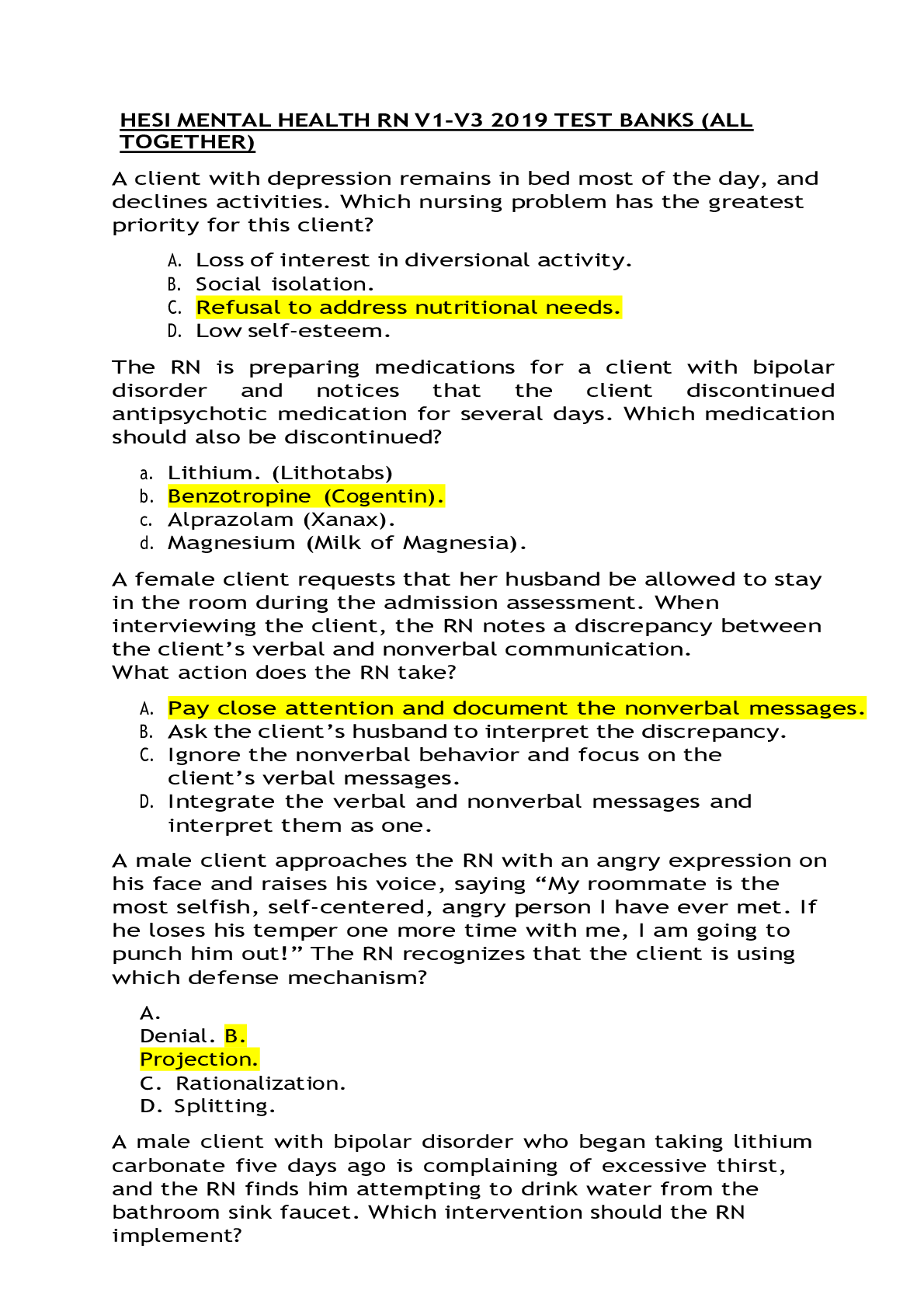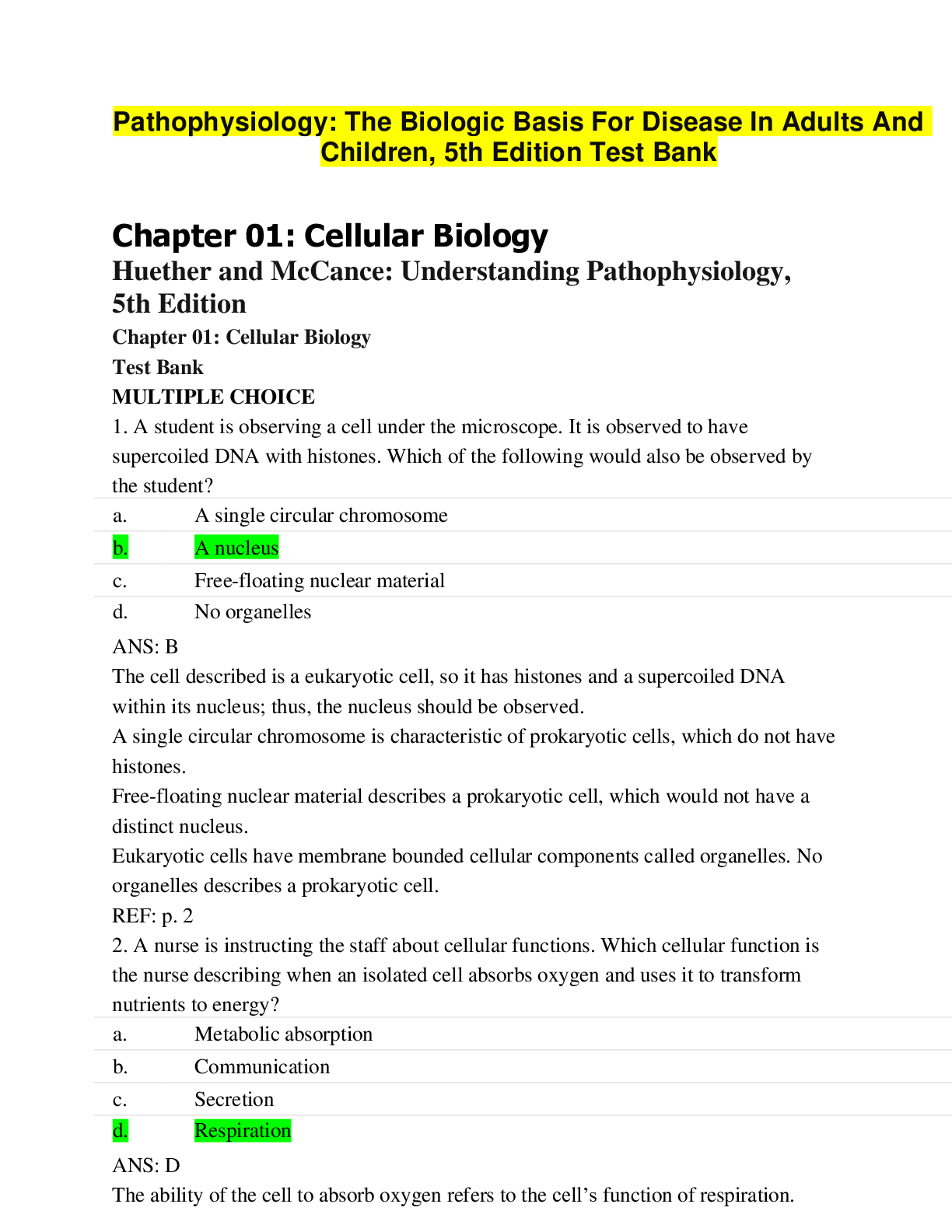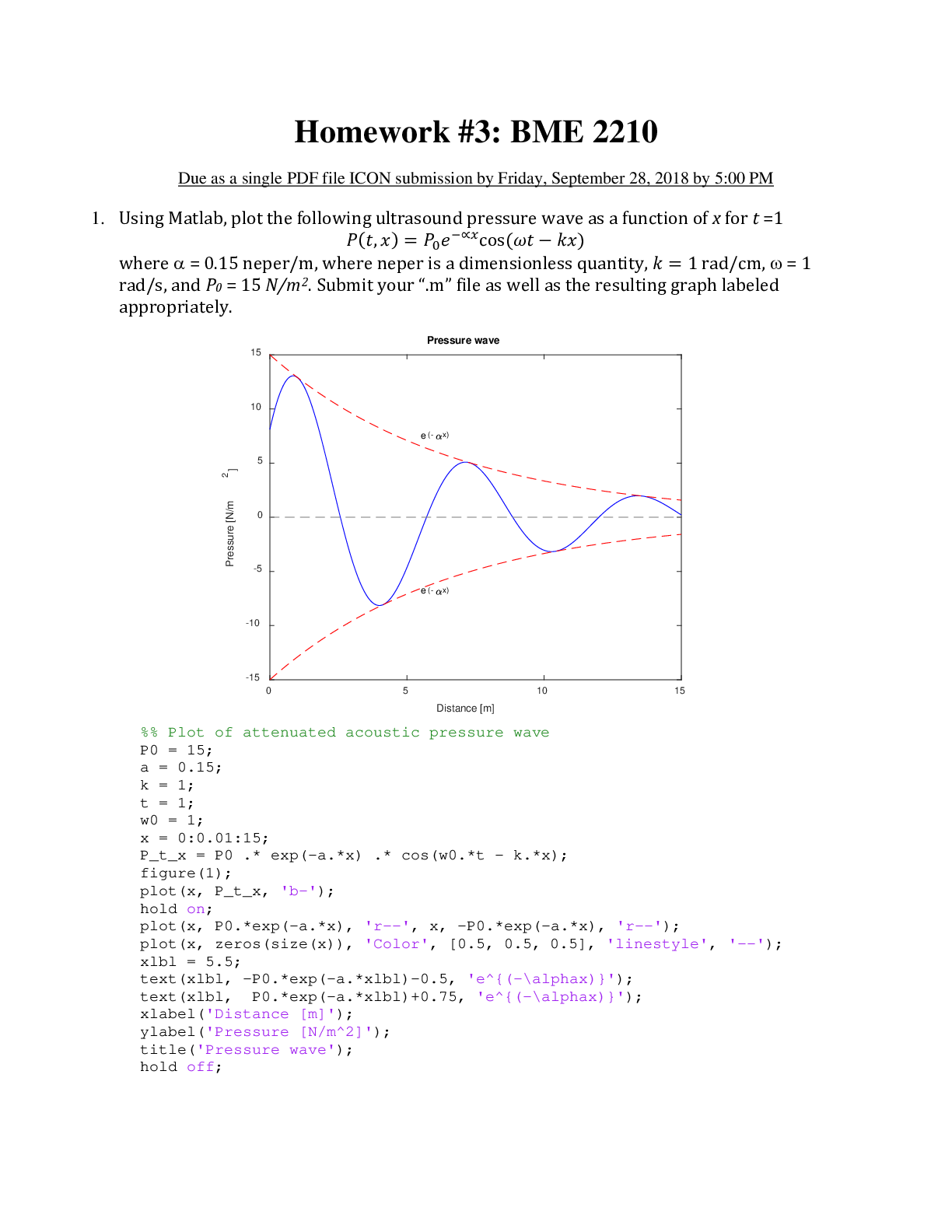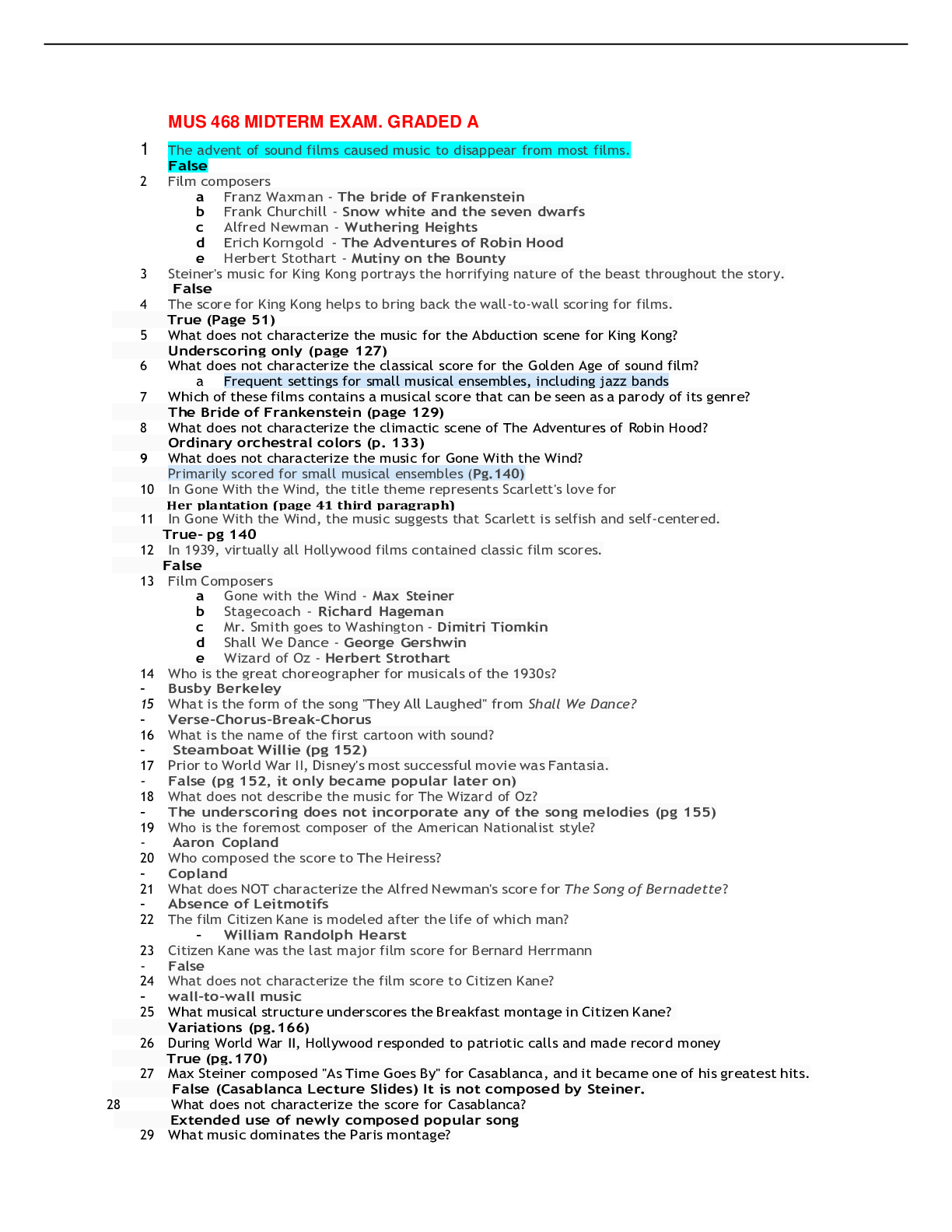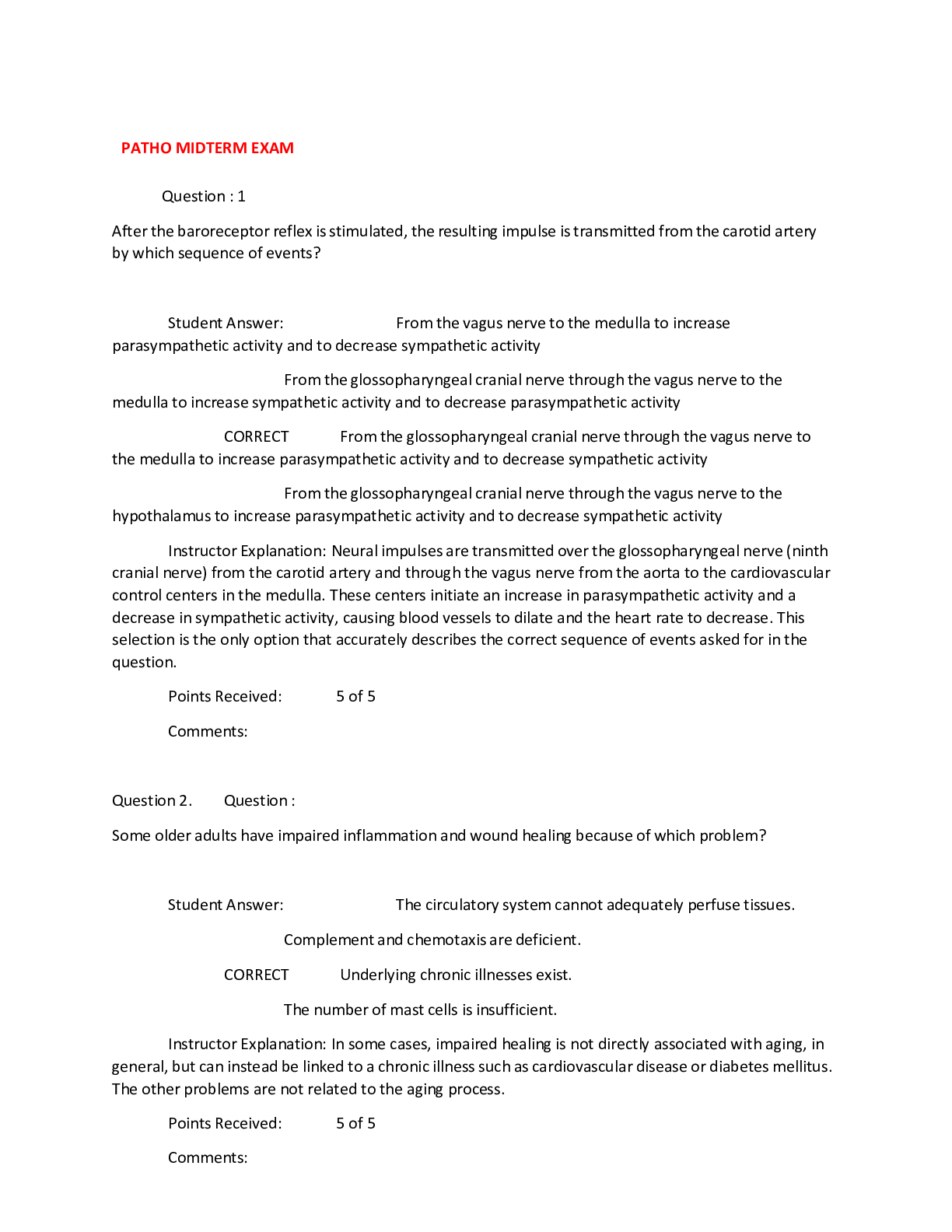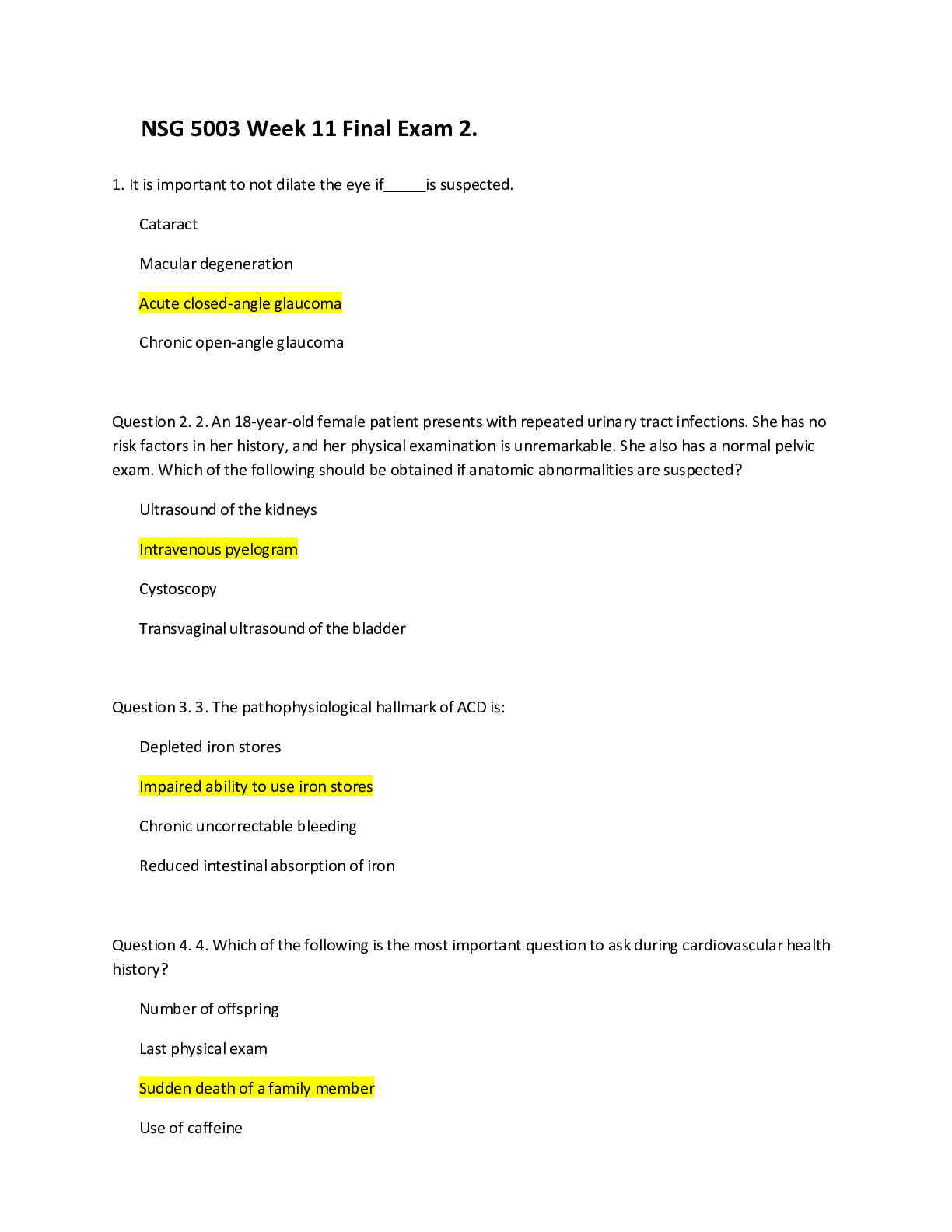Micro Biology > EXAM > Microbiology: An Introduction, 13e (Tortora et al.) (All)
Microbiology: An Introduction, 13e (Tortora et al.)
Document Content and Description Below
Microbiology: An Introduction, 13e (Tortora et al.) Chapter 1 The Microbial World and You 1.1 Multiple-Choice Questions 1) Microorganisms are involved in each of the following processes EXC... EPT A) infection. B) decomposition of organic material. C) O2 production. D) food production. E) smog production. Section: 1.1 Bloom's Taxonomy: Remembering Learning Outcome: 1.1 Global Outcome: 5 2) Each of the following organisms would be considered a microbe EXCEPT A) yeast. B) protozoan. C) bacterium. D) mushroom. E) virus. Section: 1.1 Bloom's Taxonomy: Remembering Learning Outcome: 1.4 3) The term used to describe a disease-causing microorganism is A) microbe. B) bacterium. C) virus. D) pathogen. E) infection. Section: 1.1 Bloom's Taxonomy: Remembering Learning Outcome: 1.1 4) Common commercial benefits of microorganisms include synthesis of A) riboflavin. B) acetone. C) insulin. D) aspirin. E) riboflavin, acetone and insulin. Section: 1.1 Bloom's Taxonomy: Remembering ASMcue Outcome: 6.3 Learning Outcome: 1.1 5) What factors contribute to the rising incidence of antibiotic resistance? A) overuse of the specific drugs B) misuse of the specific drugs C) random mutations in bacterial genomes D) random mutations, overuse and misuse of specific drugs E) overuse and misuse of specific drugs Section: 1.5 Bloom's Taxonomy: Understanding ASMcue Outcome: 4.1 Learning Outcome: 1.19 Global Outcome: 5 6) The formal system for classifying and naming organisms was developed by A) Robert Koch. B) Ignaz Semmelweis. C) Aristotle. D) Carolus Linnaeus. E) Louis Pasteur. Section: 1.2 Bloom's Taxonomy: Remembering Learning Outcome: 1.3 7) In the name Staphylococcus aureus, aureus is the A) genus. B) domain name. C) species. D) kingdom. E) family name. Section: 1.2 Bloom's Taxonomy: Understanding Learning Outcome: 1.3 8) A prokaryotic cell may possess each of the following cellular components EXCEPT A) flagella. B) a nucleus. C) ribosomes. D) a cell wall. E) a cell membrane. Section: 1.2 Bloom's Taxonomy: Remembering ASMcue Outcome: 2.1 Learning Outcome: 1.4 9) Which of the following is NOT associated with viruses? A) organelles B) nucleic acid C) envelope D) chemical reactions E) protein coat Section: 1.2 Bloom's Taxonomy: Understanding ASMcue Outcome: 2.1 Learning Outcome: 1.4 10) Figure 1.1 The bacterial shape of the cells in the scanning electron micrograph shown in Figure 1.1 would best be described as A) bacillus. B) spiral. C) coccus. D) ovoid. E) columnar. Section: 1.2 Bloom's Taxonomy: Understanding ASMcue Outcome: 2.1 Learning Outcome: 1.4 11) Protozoan motility structures include A) cilia. B) flagella. C) pseudopods. D) cilia and pseudopods only. E) cilia, flagella, and pseudopods. Section: 1.2 Bloom's Taxonomy: Remembering Learning Outcome: 1.4 12) Viruses are not considered living organisms because they A) cannot reproduce by themselves. B) are structurally very simple. C) can only be visualized using an electron microscope. D) are typically associated with disease. E) are ubiquitous in nature. Section: 1.2 Bloom's Taxonomy: Remembering ASMcue Outcome: 4.4 Learning Outcome: 1.4 13) Microbes that live stably in and on the human body are called the A) transient microbiota. B) human microbiome. C) pathogenic microorganisms. D) virulent microorganisms. E) opportunistic microbiota. Section: 1.1 Bloom's Taxonomy: Remembering ASMcue Outcome: 5.4 Learning Outcome: 1.2 14) Which of the following is NOT a domain in the three-domain system? A) animalia B) archaea C) bacteria D) eukarya Section: 1.2 Bloom's Taxonomy: Remembering ASMcue Outcome: 1.5 Learning Outcome: 1.5 15) A system of classification grouping organisms into 3 domains based on the cellular organization of organisms was devised by A) Carolus Linnaeus. B) Anton van Leewenhoek. C) Carl Woese. D) Louis Pasteur. E) Robert Koch. Section: 1.2 Bloom's Taxonomy: Remembering ASMcue Outcome: 1.5 Learning Outcome: 1.5 [Show More]
Last updated: 2 years ago
Preview 1 out of 558 pages
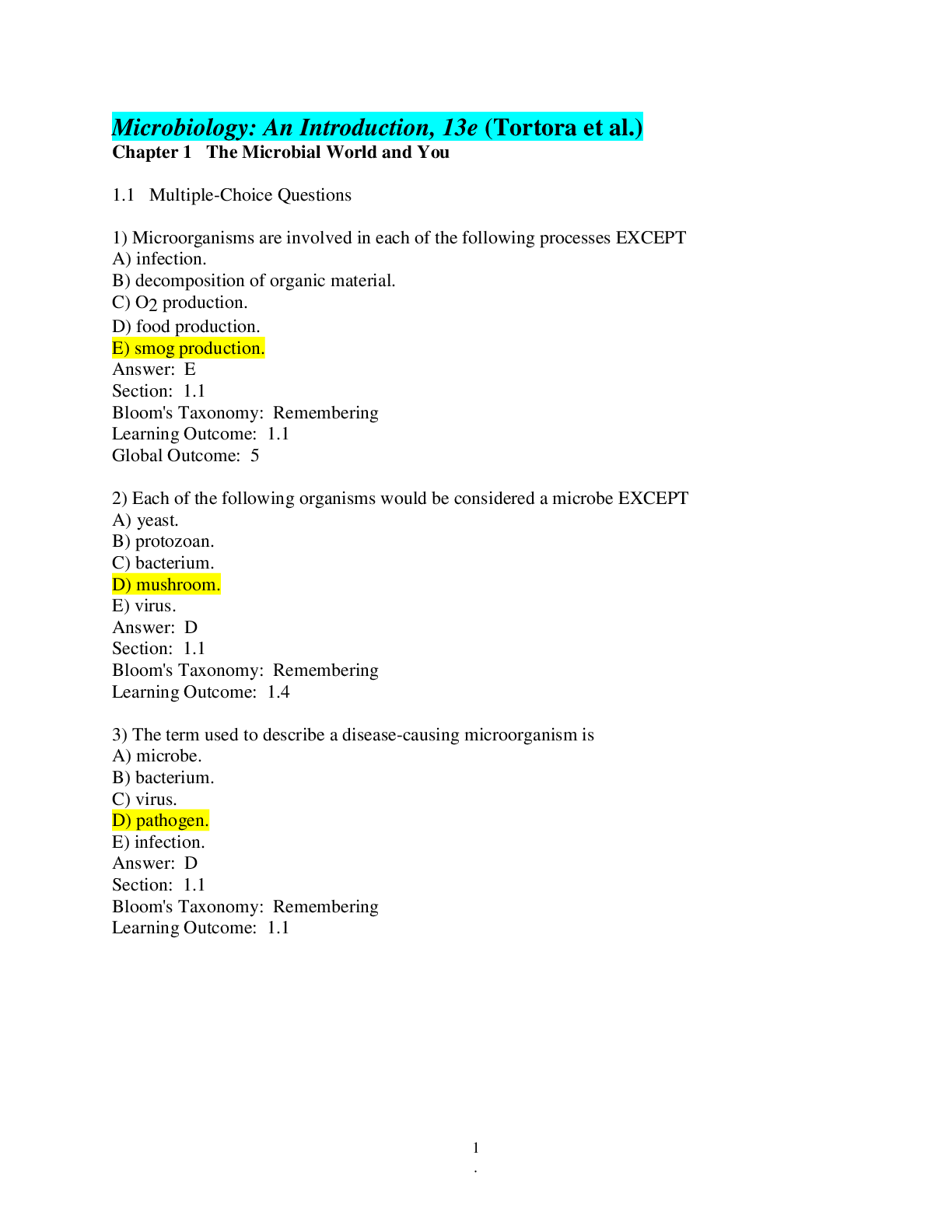
Buy this document to get the full access instantly
Instant Download Access after purchase
Buy NowInstant download
We Accept:

Reviews( 0 )
$20.00
Can't find what you want? Try our AI powered Search
Document information
Connected school, study & course
About the document
Uploaded On
Apr 27, 2021
Number of pages
558
Written in
Additional information
This document has been written for:
Uploaded
Apr 27, 2021
Downloads
0
Views
184

 HESI VI EXIT EXAM.png)
